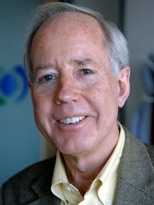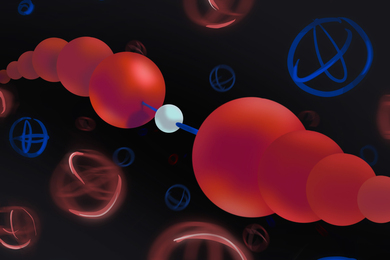A gas used for fumigation has the potential to contribute significantly to future greenhouse warming, but because its production has not yet reached high levels there is still time to nip this potential contributor in the bud, according to an international team of researchers.
Scientists at MIT, the Scripps Institution of Oceanography in San Diego and other institutions are reporting the results of their study of the gas, sulfuryl fluoride, this month in the Journal of Geophysical Research. The researchers have measured the levels of the gas in the atmosphere, and determined its emissions and lifetime to help gauge its potential future effects on climate.
Sulfuryl fluoride was introduced as a replacement for methyl bromide, a widely used fumigant that is being phased out under the Montreal Protocol because of its ozone-destroying chemistry. Methyl bromide has been widely used for insect control in grain-storage facilities, and in intensive agriculture in arid lands where drip irrigation is combined with covering of the land with plastic sheets to control evaporation.
"Such fumigants are very important for controlling pests in the agricultural and building sectors," says Ron Prinn, director of MIT's Center for Global Change Science and a co-author on the new paper. But with methyl bromide being phased out, "industry had to find alternatives, so sulfuryl fluoride has evolved to fill the role," he says.
Until the new work, nobody knew accurately how long the gas would last in the atmosphere after it leaked out of buildings or grain silos. "Our analysis has shown that the lifetime is about 36 years, or eight times greater than previously thought, with the ocean being its dominant sink," Prinn says. So it would become "a greenhouse gas of some importance if the quantity of its use grows as people expect." For now, the gas is only present in the atmosphere in very small quantities of about 1.5 parts per trillion, though it is increasing by about 5 percent per year. Its newly reported 36-year lifetime, along with studies of its infrared-absorbing properties by researchers at NOAA, "indicate that, ton for ton, it is about 4,800 times more potent a heat-trapping gas than carbon dioxide" says Prinn.
Fortunately, though, "we've caught it very early in the game," says Prinn, the TEPCO Professor of Atmospheric Science in MIT's Department of Earth, Atmospheric and Planetary Sciences. The detection was made through a NASA-sponsored global research program called the Advanced Global Atmospheric Gases Experiment (AGAGE). "In AGAGE, we don't just monitor the big greenhouse gases that everybody's heard of," he says. "This program is also designed to sniff out potential greenhouse and ozone-depleting gases before the industry gets very big."
The lead author of the research paper is Jens Mühle of Scripps, and besides Prinn, the co-authors include Jin Huang, a research scientist at MIT's Center for Global Change Science, Ray Weiss of Scripps, who co-directs AGAGE with Prinn, and eight others from Scripps, the University of Bristol in the United Kingdom and the Centre for Australian Weather and Climate Research.
"Unfortunately, it turns out that sulfuryl fluoride is a greenhouse gas with a longer lifetime than previously assumed," says Mühle. "This has to be taken into account before large amounts are emitted into the atmosphere."
Prinn adds that "fumigation is a big industry, and it's absolutely needed to preserve our buildings and food supply." But identifying the greenhouse risks from this particular compound, before many factories have been built to produce it in very large amounts, would give the industry a chance to find other substitutes at a time when that's still a relatively easy change to implement. "Given human inventiveness, there are surely other alternatives out there," says Prinn. He describes this approach as "a new frontier for environmental science -- to try to head off potential dangers as early as possible, rather than wait until it's a mature industry with lots of capital and jobs at stake."
A version of this article appeared in MIT Tech Talk on March 11, 2009 (download PDF).






